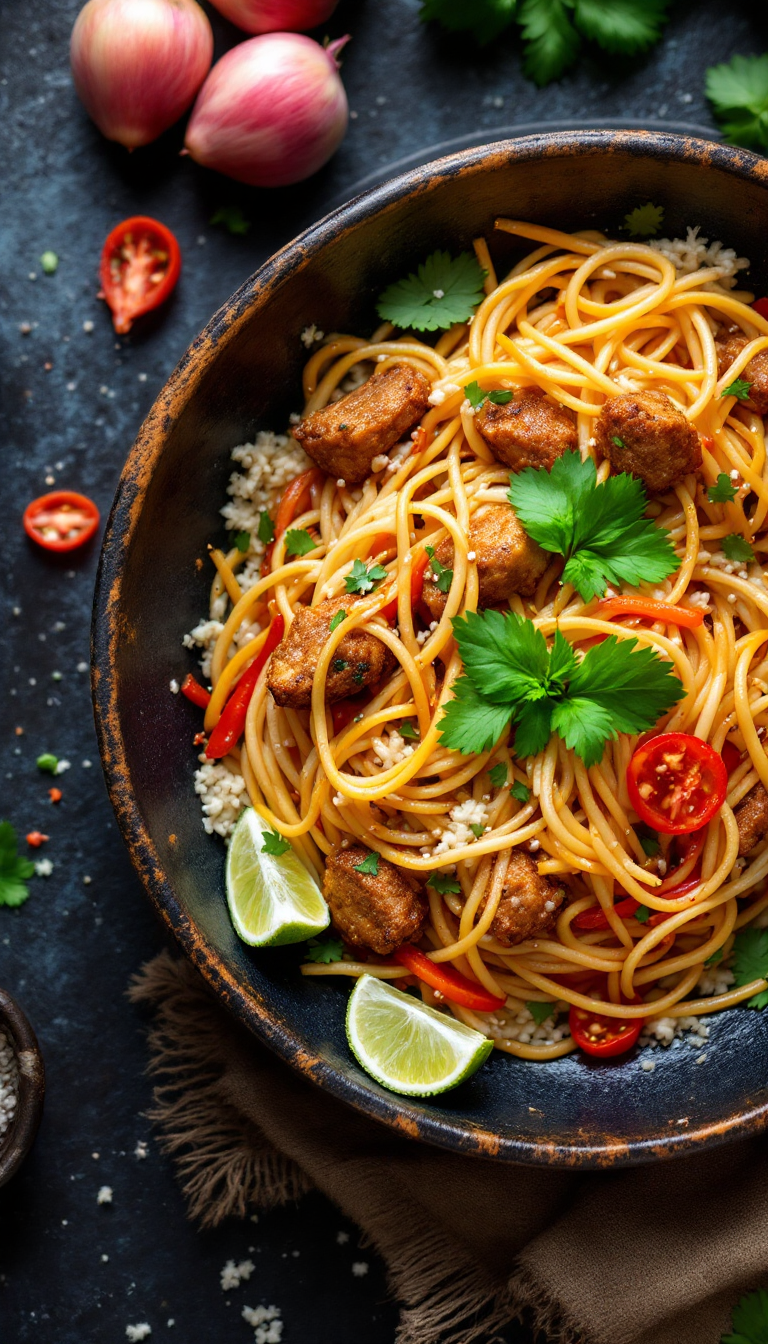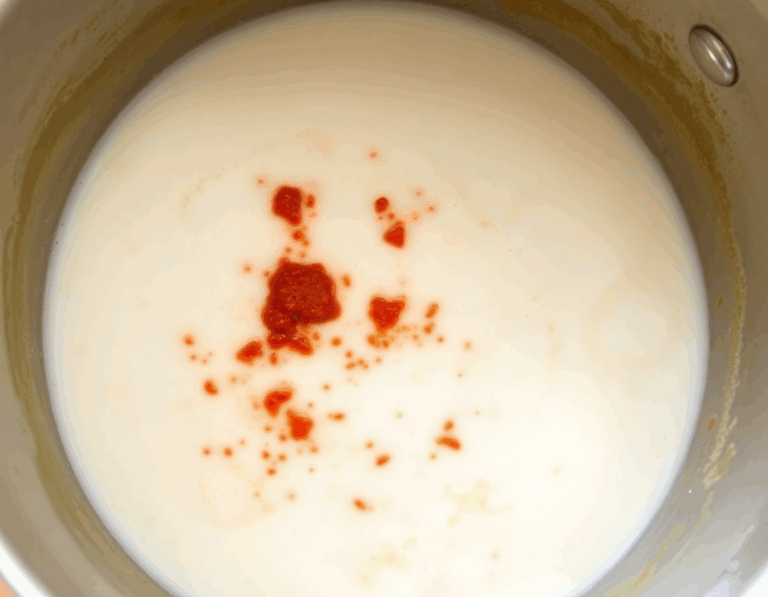
Thai cuisine is like a vibrant dance of flavors—each bite a delightful surprise that whisks you away to a bustling Bangkok street market. Last week, when I was attempting to recreate my favorite Thai dish at home, I realized how a splash of lime or a handful of fresh basil can elevate an ordinary meal into an unforgettable experience. Whether you’re a seasoned chef or just someone who loves experimenting with new flavors, these Thai dinner recipes will surely become a beloved staple in your cooking repertoire.
Steps
- In a medium-large stock pot over medium-high heat, combine the red curry paste with half of the coconut milk. Stir well, breaking up the curry paste, and cook until the mixture starts to bubble and thicken, approximately 2 minutes.
- Add the sliced chicken, the remaining coconut milk, and chicken stock to the pot. Cook for about 5-6 minutes, stirring occasionally, until the chicken is fully cooked and the sauce has reduced. If the sauce becomes too thick, add 2-3 tablespoons of water or more stock to adjust the consistency.
- Incorporate the sliced vegetables—onions, bell peppers, tomatoes, and zucchini—into the pot. Turn the heat down to medium and cook for another 4-5 minutes until the vegetables reach the desired tenderness, adding water if necessary to loosen the sauce.
- Mix in the fish sauce, brown sugar, and kaffir lime leaves. Cook for an additional 2 minutes, then taste the curry sauce. Adjust the seasoning with more fish sauce, sugar, or curry paste to enhance the flavor and spice as needed.
- Turn off the heat and stir in the fresh Thai basil. Allow the curry to cool slightly for a few minutes before serving. Serve hot, paired with jasmine, brown, or basmati rice. Store any leftovers in the refrigerator for up to four days.

Ingredients
- 1 pound chicken breast, thinly sliced (or crispy tofu)
- 1 pound zucchini or summer squash, sliced
- 1 cup onion, sliced
- 1 cup bell peppers, sliced
- 1 cup cherry tomatoes, halved
- 2–3 tablespoons red curry paste
- 13.5 oz can of coconut milk
- 1/2 cup water or chicken stock, more if needed
- 2 tablespoons brown sugar, more to taste
- 1 1/2 – 2 tablespoons fish sauce
- 3 kaffir lime leaves, thinly sliced (approximately 1 tablespoon)
- 1 cup fresh Thai basil
FAQ
- What are some key principles of authentic Thai cooking?
- Authentic Thai cooking revolves around three main principles: balancing flavors (salty, sweet, sour, and spicy), utilizing fresh local ingredients, and cooking with a generous spirit.
- Can I adapt Thai recipes to be vegetarian or gluten-free?
- Yes, many Thai recipes are easily adaptable for vegetarian or gluten-free diets. For example, tofu can be used as a protein substitute, and gluten-free soy sauce or tamari can replace regular soy sauce.
- What can I use as a substitute for tamarind paste in Pad Thai?
- If you don’t have tamarind paste, you can substitute it with a mixture of lime juice and rice vinegar to achieve a similar tangy flavor in your Pad Thai.
- How can I make Thai red curry paste at home?
- Thai red curry paste can be made from scratch in under 30 minutes using a food processor or a mortar and pestle. This homemade version enhances the flavor of your Thai dishes significantly.
- What is a good method for making jasmine rice?
- To make perfect jasmine rice, cook it on the stovetop in under 30 minutes. This method ensures the rice is fluffy and fragrant, making it an ideal accompaniment to Thai curries and stir-fries.
Tips
- Balance Flavors: When preparing Thai dishes, keep the balance of salty, sweet, sour, and spicy flavors in mind. Adjust ingredients like fish sauce, sugar, and lime juice to achieve the desired taste.
- Use Fresh Ingredients: Fresh, local ingredients, such as Thai basil, kaffir lime leaves, and lemongrass, can significantly enhance the authenticity and flavor of your Thai dishes.
- Customize Spice Levels: Customize the spice level of your dishes by adjusting the amount of curry paste. Start with a smaller amount and gradually add more to reach your preferred level of heat and flavor.
- Cooking Protein and Vegetables: If using crispy tofu, add it at the end to retain its texture. For vegetables, adjust cooking times based on their firmness; firmer vegetables like squash may need a few extra minutes to cook thoroughly.
Equipment
- Wok or large non-stick skillet – Essential for stir-frying and cooking the Thai dishes mentioned.
- Bamboo steamer basket – Used for making traditional Thai sticky rice.
- Mortar and pestle – Useful for making authentic curry pastes from scratch.
- Rice cooker – For cooking perfect jasmine rice.
- Mandoline slicer – Useful for slicing vegetables thinly and evenly.
- Kaffir lime leaves – May be included in equipment as they are a specific ingredient not commonly found in all stores.
- Food processor – Helpful for making curry pastes and other preparations quickly.
- Instant Pot – Optional but useful for making some of the curry recipes quickly and efficiently.
